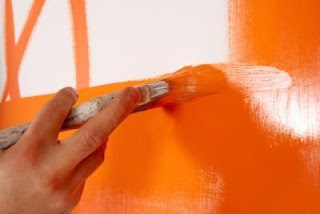In modern brush making, the process of grading hairs and making handles is carried out by machine, the actual building up of hair and placing in the ferrules is done by hand, the bristle of hair being arranged in carefully graduated lengths. Nowadays old brush settings such as resin pitch and glue have been superseded by vulcanised rubber and synthetic cements.
The part of the brush which does the brushing is called the bristle, because for many centuries bristle was the chief material used to make brushes. Bristle comes from hogs, pigs and boars, and from no other sources. It has many desirable properties which make it ideal for use in brushes, but it is very expensive to manufacture. For this reason many other materials are used, collectively being known as brush filling materials.
For centuries the West yielded sufficient quantities of bristle for our needs, but by year 1800, imported White Russian bristle was considered to be more desirable, and was available until the Russian Revolution. We then turned to China for ours needs, the bulk of which is black and is considered to be more inferior. Domesticated pigs no longer yield sufficient quantities, so we are now dependent on countries like Russia, China, India, Poland and Australia.
Bristle is naturally curved, and so before it can be used it must be straightened. The property of the bristle varies according to the country of origin. The length of bristle is usually in the region of 2 to 7 inches. The colours are normally white, yellow, grey or black. Grey or black Russian bristle tends to be rather coarse. China black is stiff but fine, and Siberian white or lily has the best quality but is rare. One feature common to all types is the fine tapering along it's length, and split ends known as the flag. This is most useful, because it enables a more even spread of paint, and more paint can be loaded onto the brush.
The search for bristle substitutes led to the experimental use of artificial silk fibres such as rayon and nylon. These synthetic filaments are hard wearing, but because they are smooth and non-absorbent they carry far less paint. It is a known fact that a brush requires a period of 'breaking in' before it achieves perfect condition. During this period the flag end is worn away by abrasion, and is replaced by a fine tapering point. This is not possible with nylon. The use of horse hair, which comes from the mane or tail is normally used to make jamb dusters and cheap retail brushes.
Mexican fibre is extracted from the leaves of a plant. In it's natural state it is off-white and has a pasted appearance. There are about 20 different plants that are used for this purpose, and all must be cleaned, combed and cut before use. Brushes made from these fibres are generally not suitable for good work.
Brushes which are classed as 'soft hair' are used in furnishing industry. Many are often from small furry animals, such as the tails of the squirrel, badger, polecat and pony. Another soft hair comes from inside the ears of cattle, known as ox hair. Red and black sable is obtained from Siberian sable and other members of the weasel family. These are mainly used for sign-writing, graining, guilding and art work.

